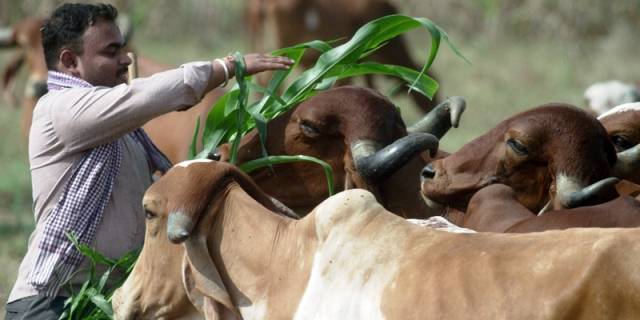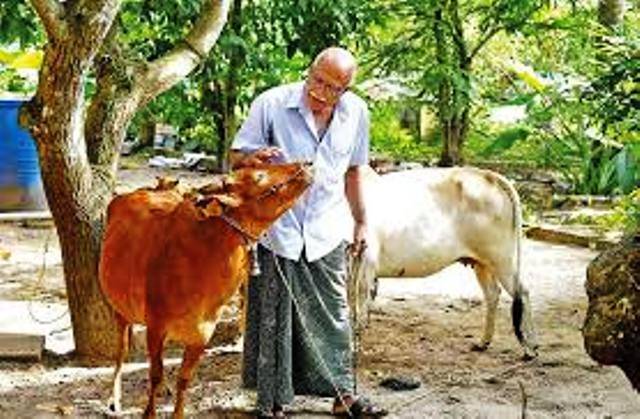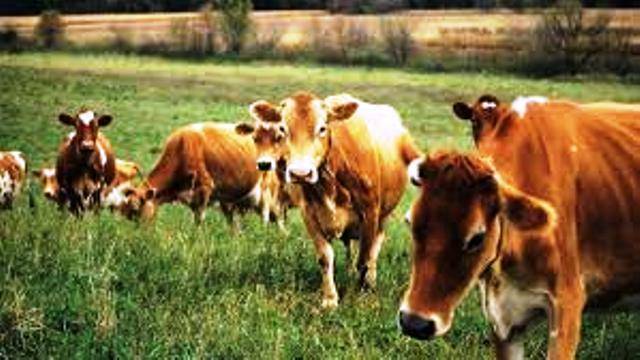
Cow plays an important role in Indian mythology and religion. Most of the population lives in villages. The village houses have cows as a domestic animal for the purpose of milk, dung as fertilizer and fuel, whereas even the cow urine is also useful for medicines. All these beliefs make the cow a sacred animal. Indian, mostly Hindus consider Cow as their mother.
Indian constitution also protects the cow. There is a myth that cow takes the human soul to heaven. All these characteristic of the cow gives it the number one position in the houses. Many families are considered as a rich family if they are having a number of a cow in their houses. Cow farming may be the status symbol but it also gives good earning.
Different people have different reasons for cattle farming. Many people want to raise cattle in large scale for selling animals. Some people want to raise dairy cattle for the purpose of selling milk. Few people have their interest to start raising cattle to show in fairs and other local events. For family use only, people also raise a few cattle.
In view of today`s economy, many people are deciding to raise a few cattle for their personal use. Regarding commercial operation or want to have a few animals for your family’s need, there are a few basics about how to start a cattle farming based on the location to purchasing cattle and selling the products.

For becoming a successful cattle farmer, plenty of knowledge about the animals is required, though these are the complex questions. Livestock’s versatility makes them central to the survival of millions of people in marginal areas. Meat and dairy are excellent sources of protein, vitamins, and minerals, and when managed correctly livestock contribute to important ecosystem functions such as soil fertility. But there are concerns over the industry’s sustainability.
Meat is a relatively inefficient way to produce calories. Livestock use up about 40 percent of global arable land to deliver 20 percent of human calorific intake, the ratio is 12 calories of chicken for every 100 calories of grain; beef is 3 to 100. However, while livestock consume around one third of all cereal production, 86 percent of their plant diet comes from grass, leaves, and other foods humans cannot eat. In this way, it is argued that livestock positively contribute to food security by making the inedible, edible.
As the debate continues, so does demand. Over the last thirty years, meat and dairy consumption has tripled in low and middle-income countries, largely driven by rising prosperity and urbanization. According to the data available, this growth is on top of already enormous demand in developed nations: the average American consumes 222lbs of meat per year. With global demand forecast to increase a further 80 percent by 2030, this could place a severe strain on our ability to feed a growing population with earth’s limited agricultural land.
The world’s 1.4 billion cattle, plus billions of pigs and chickens, already occupy two billion hectares of grasslands, of which some 700 million hectares could arguably be used more effectively to grow crops that can be eaten directly by humans. One potential solution, unless we all become vegetarians, is to make farmed animals more productive. The average farm animals may not be meeting their genetic potential when it comes to production; but techniques and technologies are being developed and deployed to close that gap and keep meat on the menu.
Farmers have always striven for efficiency. For millennia they have selectively bred animals to increase their inherent resilience and productivity in the USA, dairy cows produce four times more milk than 75 years ago. With genome sequencing, artificial insemination, and embryo transfer, science could soon bring some animals to peak productivity. Supporting this is better nutrition, improving an animal’s conversion of feed into protein. Adding natural enzymes and organic acids increase the digestibility of feeds, enabling animals to draw more nutrition from a greater variety of poorer plants. It also supports a healthier gut making them less susceptible to disease.

A growing understanding of animals’ precise nutritional needs is producing feeds tailored to optimize their energy, protein, and vitamins while improving overall well-being, better yields and healthier herds.
Most people’s vision of future farming is technology, and the drones, sensors, and wearables of precision farming all contribute to greater efficiency. Drones are increasingly used to monitor the health and productivity of both animals and the land they graze. Able to operate over vast swathes of difficult terrain, a drone fitted with infrared sensors and multi-spectrum, high-definition cameras can send real-time images of herds and flocks. This helps farmers to quickly and easily find lost animals, identify newborns, and diagnose sickness in herds and individual animals. Equally, drones show the condition of pasture, informing decisions on moving animals for food, water, or safety.
Select your desired breed after determining the purpose of your cattle farm. There are hundreds of cattle breeds available throughout the world to choose from. But you should consider about the availability of your desired breed in your area. You should not choose such a breed which is not available easily in your area.
To start dairy cattle farming business, then you can consider some popular dairy cattle breeds. Ayrshire, Brown Swiss, Holstein and Jersey are some popular and common dairy cattle breeds.
There are 37 plus cow breeds found in India with partly or fully of Indian origin, used for dairy and listed as best for milking cow breeds in the country. The Brahman cattle, Nelore cattle, Guzerat cattle and Zebu type are most popular breeds of cattle, originating from India and South Asia. Among the best for milking cow breeds are Sahiwal, Gir, Tharparkar, Rathi and Red Sindhi.
Malnad Gidda breed of cattles are found mostly found at densely forested Malenadu region of Karnataka and also hilly area and coastal Karnataka. The cow breed is small and known for their adaptability, found to be of black to brown complexions.
Other well known cow breeds found in India are Nimari and Malvi from Madhya Pradesh, Kenkatha and Kherigarh from Uttar Pradesh, Alambadi cattle from Tamil Nadu, Ponwar cattle from Uttar Pradesh, Dangi cattle from Maharashtra, Umblachery from Tamil Nadu, Amrit Mahal from Karnataka, Bachaur cattle from Bihar and Gangatiri cattle breed from Uttar Pradesh.










